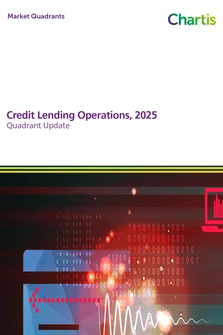<p>In an effort to understand the causes of the global economic crisis, regulators are sharply focused on financial institutions’ (FIs) management of liquidity risk. Consequently, it is that focus that is driving FIs’ expenditure on liquidity risk management and Asset Liability Management (ALM) systems.</p>
<p> </p>
<p>Liquidity risk requires data to be gathered from right across the enterprise, all departments, subsidiaries, business units, currencies, financial products etc. So having a single integrated data repository is critical so that data is of the highest quality, complete and efficiently managed.</p>
<p> </p>
<p>FIs recognize that they need to be able to respond to regulators’ requests for information quickly, so the ability to deliver accurate information in a timely manner is paramount.</p>
<p> </p>
<p>For the past 10 years, FIs have been making incremental improvements to their existing ALM systems without any need for a total replacement. Consequently, vendors established in the market have been able to improve and upgrade the existing systems by adding features and functions, effectively keeping newcomers out of established accounts. However, it also means that many of the current systems are based on out-of-date technology and inefficient add-ons. Also, FIs are beginning to realize that the cost of ongoing support and maintenance of these outdated systems is too high. It is this recognition that has led to the growth in demand for modern, dynamic, cost effective technology to replace the outdated systems.</p>
<p> </p>
<p>Another factor driving the implementation of new systems is the adoption of Basel III which institutes new liquidity ratios and therefore significantly enhances the liquidity requirements that FIs have to meet.</p>
<p> </p>
<p>This report looks at the drivers behind the market for liquidity risk management systems and product trends, and forecasts how much the market is likely to grow over the next two years. It also assesses the competitive landscape and covers the leading vendors: Algorithmics, Fernbach, FinArch, Fiserv, Imagine, Kamakura, Misys, Moody’s Analytics, Murex, Oracle, Prometeia, QRM, Razor, SAS, SunGard, Thomson Reuters and Wolters Kluwer-FRSGlobal.</p>
Only users who have a paid subscription or are part of a corporate subscription are able to print or copy content.
To access these options, along with all other subscription benefits, please contact info@chartis-research.com or view our subscription options here: https://www.chartis-research.com/static/become-a-member
You are currently unable to print this content. Please contact info@chartis-research.com to find out more.
You are currently unable to copy this content. Please contact info@chartis-research.com to find out more.
Copyright Infopro Digital Limited. All rights reserved.
As outlined in our terms and conditions, https://www.infopro-digital.com/terms-and-conditions/subscriptions/ (point 2.4), printing is limited to a single copy.
If you would like to purchase additional rights please email info@chartis-research.com
Copyright Infopro Digital Limited. All rights reserved.
You may share this content using our article tools. As outlined in our terms and conditions, https://www.infopro-digital.com/terms-and-conditions/subscriptions/ (clause 2.4), an Authorised User may only make one copy of the materials for their own personal use. You must also comply with the restrictions in clause 2.5.
If you would like to purchase additional rights please email info@chartis-research.com


